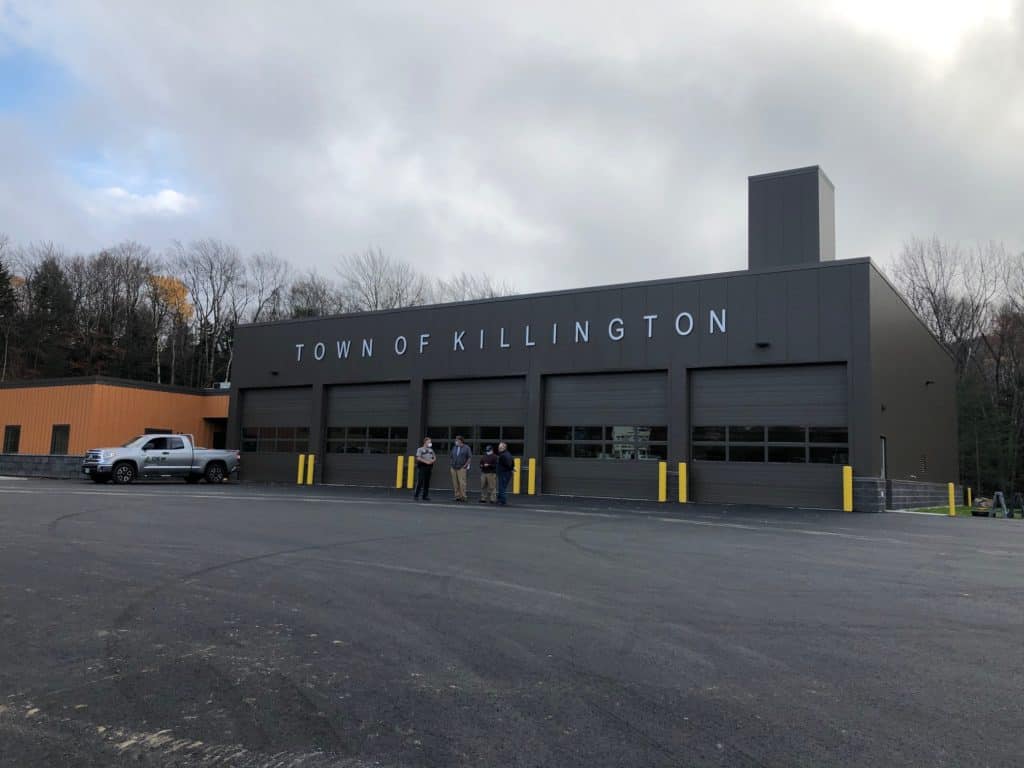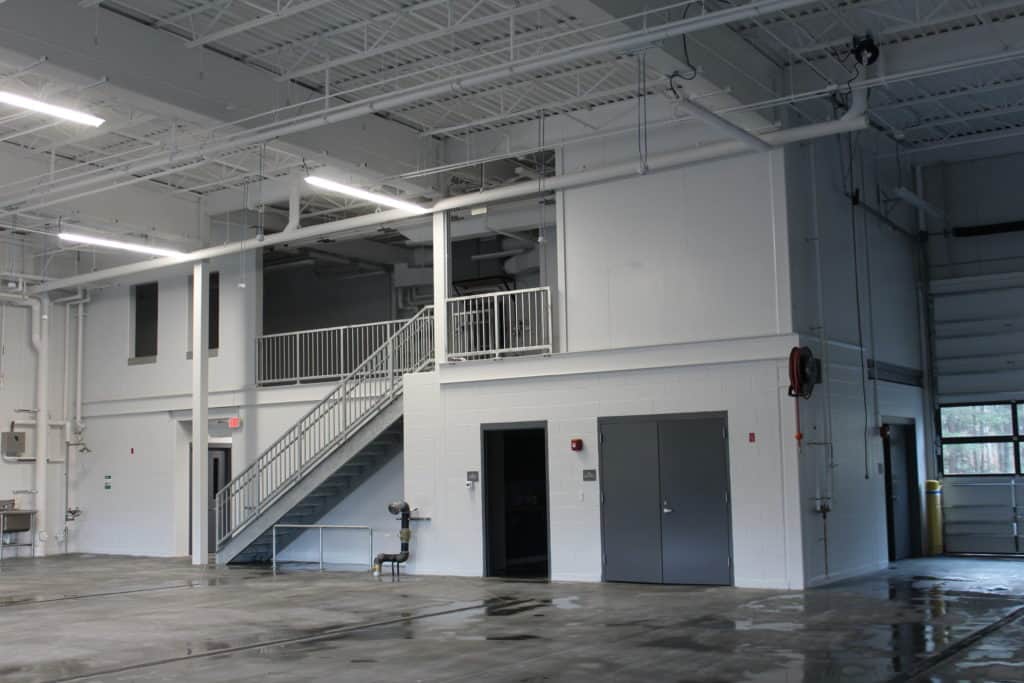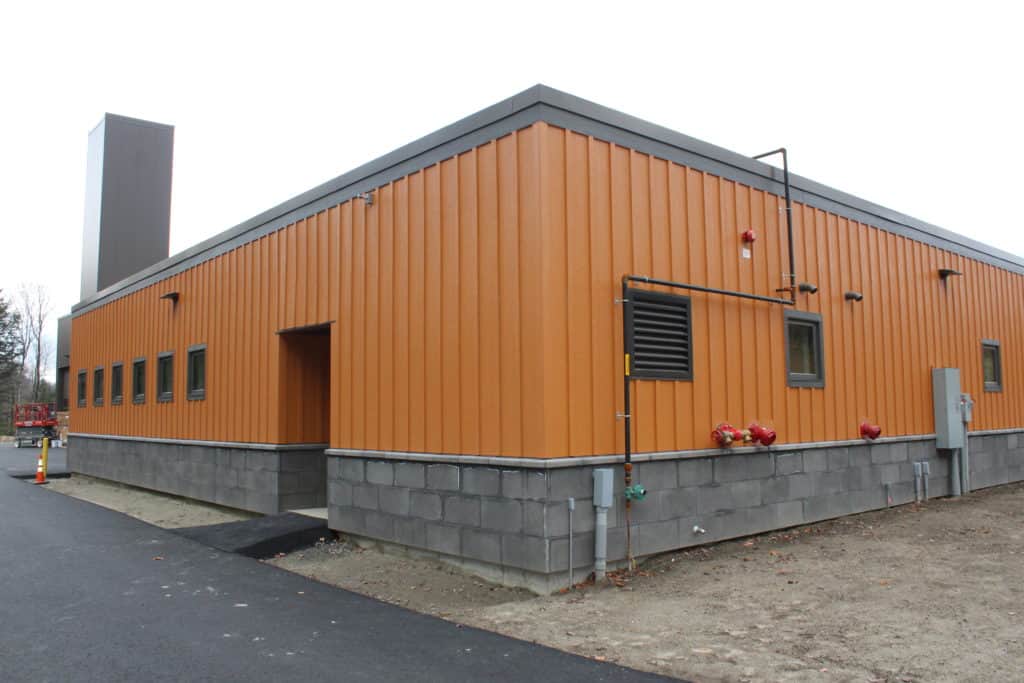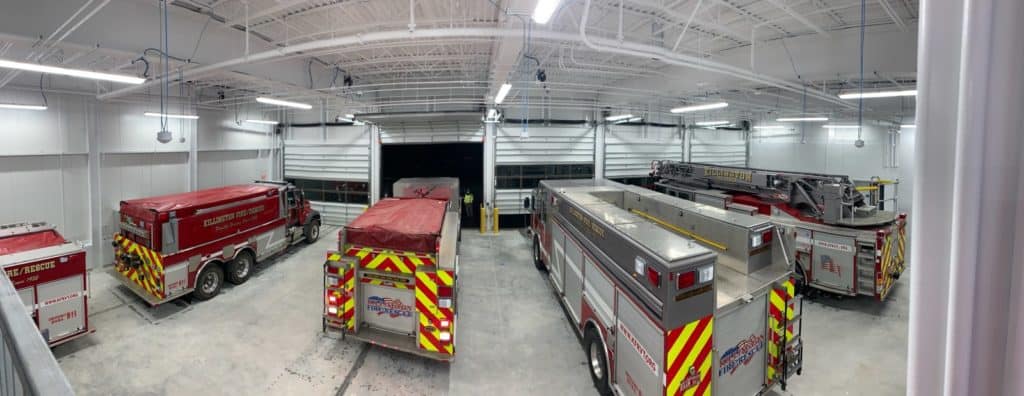Mountain Times
OCTOBER 28, 2020
By Polly Mikula
Last week the new Killington Public Safety Building received its temporary dept. of fire safety certificate of occupancy, meaning the town’s fire, rescue and police departments could begin to move into their new headquarters, Town Manager Chet Hagenbarth explained.
The new building on Killington Road is just over a mile north of the current fire station. The new 14,000-square-foot structure houses the fire department, Search and Rescue team, and the Killington Police Dept.
The building features four bays for firetrucks in the front facing Killington Road and one in the rear for light rescue and police, with sufficient spacing. There is also a hose tower to drain fire hoses and store them properly after use, an efficient exhaust system, a toxic rinse room (to wash off fire retardant and other chemicals before entering the building), a men’s and a women’s locker room with showers, and a mezzanine floor with office space and storage.

In a separate section of the building, the police department has a “sally port” to allow secure gated entry for a police vehicle, a temporary holding cell, an interview/interrogation room with one-sided glass, office space and rooms for proper record storage.
The building also features a 900-square-foot community room that can seat 50-60 people (not considering current social distancing requirements) with a small kitchen attached and public bathrooms.
“It’s a beautiful building and all went as planned building-wise,” said Hagenbarth. “Then we ran into a few big obstacles.”

Over budget
The first of those obstacles was ledge, the second was the pandemic, and the third was water capacity, Hagenbarth explained. “None of which were in our control, but its still hard to not blame myself… I’ve never missed a budget in all the projects I’ve overseen,” he said.
Cumulatively, additional non-building related costs added up to $478,121.51, after the future sale of the existing firehouse (estimated as a $300,000 offset), Hagenbarth reported Tuesday, Oct. 27 at the Select Board meeting.
The town had included a 12% budgeted contingency, for normal overages, he explained but these were “unexpected outliers.”
The town borrowed $4,775,000 to finance the construction after voters approved the measure in March 2019. The 4-acre parcel was purchased separately the year prior for $525,000.
“Ledge costs were incurred outside the building footprint through to the 45,000 gallon storage tank and for drainage, which was required to be routed around the building to the stormwater treatment swale in front of the building,” Hagenbarth explained.
Additional ledge costs totaled $211,888.17.
The Covid-19 pandemic contributed to increased costs by delaying the project and pushing it into winter months and by increasing the costs of materials.
“Winter conditions costs were incurred because the stormwater permit as delayed from July 1-Sept. 3 causing a two month delay,” Hagenbarth explained. “Subsequently, the additional two-month delay caused by ledge removal caused the building to not be enclosed prior to the winter weather conditions setting in. Had either event not occurred, this cost would have been reduced to approximately $40,000 for a potential savings of over $120,000.”
The delay that pushed the project into winter conditions cost the town an additional $161,155.37, Hagenbarth reported. The costs directly associated with the Covid shutdown totaled $54,708.10, additionally. But pending state grants could help offset this cost a bit, Hagenbarth said.

Finally, water capacity fell short of state guidelines, requiring additional effort to meet code. “A potable water storage tank system was required by code to be calculated using 50% of the well’s capacity of 55 gallons per minute. The potable water storage system calculation must assume all water faucets etc are running and keeping the eye wash station continuing to function,” Hagenbarth explained.
A $50,369.87 potable water storage system had to be added to meet those requirements.
Hagenbarth and the Select Board will discuss possible measures to cover the $478,121.51 additional project cost in the coming weeks. “We have options, I do not think we’ll be going back to the voters to ask for more money or have to increase taxes to cover this cost,” he said.

